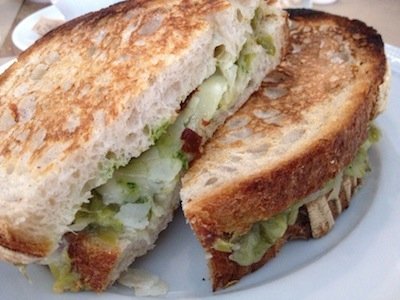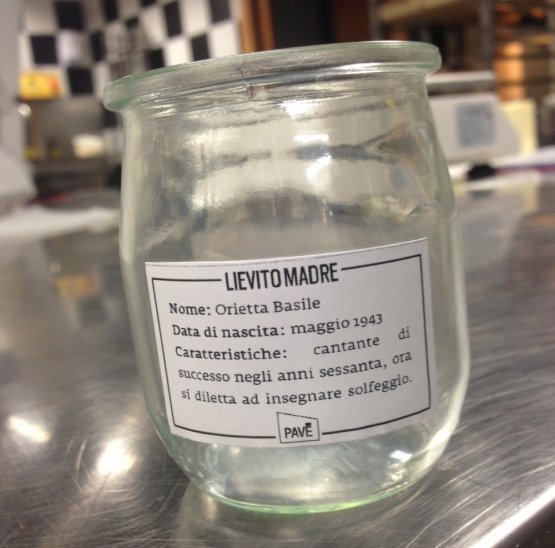Here below we publish the words of Giovanni Giberti, head chef at Pavè, one of this year’s most interesting novelties in Milan. It is an ode to mother yeast, a premise to two important events: today, if you visit the pastry-shop with open-view workshop in via Casati, tel. +39.02.94392259, you can receive as a gift a vase of mother yeast. And you can taste in advance the Panino alla Aimo, Giberti’s tribute to the famous dish by his master Aimo Moroni, Spaghetti with onion and fresh chilli pepper. This bread-roll will again be the protagonist at Pavè, one of the establishments of Identità Milano’s Fuori Congresso, during the three day event on 10-12th February.
Trusting mother yeast for pastry-making means going much beyond what we have understood on the objective characteristics of the product, that is better digestibility and long duration. Choosing mother yeast means marrying, in a certain sense, a return to the past, to a ritual that has to be kept alive. I’m thinking of bread: of the careful and patient gestures that are also required for a primary good.

Aimo's style panino with cipollotto with Grana Padano flakes
Mother yeast must be nurtured like a child. Every day. Regardless of my daily use, I need to take care of it and control it daily, keeping an ancient ritual alive. Its charm, in fact, is based in its educating an artisan to respect time, to give himself rules that were set by someone else. Or, in this case, by something else. This is the most profound meaning of what is defined as the respect for ingredients and raw materials.
Each pastry chef will always need to find a harmony with his “child” – which will thus become an essential ingredient in his production. This is an ingredient which escapes the classic rules of pastry-making but is able to humanize the latter even more than what the art of pastry already does. It will be the owner of your time, strongly entering your life. A romantic paradox in which a being shapes, even before it is shaped.
I’ve chosen to use mother yeast for our pastries, our bread and our focaccia, aiming at simplicity and avoiding doughs enriched with too many ingredients as I’m convinced that a simple product lets the quality of raw materials, and thus of the product itself, stand out.
The recipe that I would suggest to all of you, therefore, is this:
Mother yeast bread with rosemary and corn flour

Each small vase given as a gift today at Pavè has a name, a history and a personality with 70 years of history: choose the one that is closer to you, or to your grandfather
900 g of strong flour
100 g of corn flour
200 g of ready mother yeast
700 g of water
25 g of salt
20 g of chopped rosemary
Method
Knead the flours with the yeast and 2/3 of the water. Once you have formed a rough dough, leave it to rest for 20 minutes. Knead again adding the remaining water, a little at a time and, finally, the salt and rosemary. Leave to rise for two hours. Form the bread in the desired shape (pieces of over 500 g are recommended). Form a round shape with the pirlatura* technique and place it in a bread mould. Let it rise for 3 hours. Turn the mould upside down on a baking tin and put in an oven at 250°C, then reduce the temperature to 210°C straight away. Recommended baking times are: 40 minutes for 500 g and 600 g pieces, and 60 minutes for 1 kg pieces. Once pulled out of the oven, leave to rest on a grid.
* Pirlatura: “pirlare” a dough means to form a round shape by making it turn around in your hands or on the working table, giving it a regular round shape.